About Us | History
The Departmet of Astronomy was established in 1907 as the Fourth Chair of the Department of Physics, under Professor Shinzo Shinjo. It became an independent department in 1921.
Dr. Shinzo Shinjo
In 1900, he joined the Department of Physics from the University of Tokyo as an assistant professor.
He later became a professor of the newly established the Fourth Chair of the Department of Physics and eventually the first professor of the Department of Astoronomy.
He passed away in Shanghai in 1938.
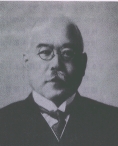
In 1925, the first building of the Department of Astoronomy within the main campus.
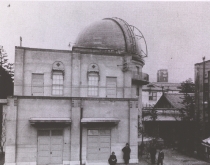
The old Astronomy Department building, constructed in 1925.
The building of the right was the South Wing, housing theoretical research laboratories, lecture rooms, library and offices. The left one was North Wing, which housed observatory research laboratories and experimental rooms. A 9 meter dome was installed on the roof, initially equipped with a Culver 33cm reflector telescope, later replaced by a Cook 30 cm refractor telescope. The white building between the two is a main office of our university, and beyond it is The Clock Tower, which was built at the same time as our building.
This was at that time known to the public as the “Kyoto University Observatory”.
Later, in 1939, it moved to the North campus and in 1980, replaced by the present brick-style building, which is still in use today.
The current building of the Department Astoronomy.
It was constructed in 1980.4F and 5F are our floors.
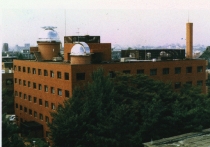

The small dome in the foreground houses a 15 cm refracting telescope by GOTO Optical, while the large dome in the background is equipped with a 40 cm Schmidt-Cassegrain telescope by Chuo Optical and MEADE (LX200GPS). Both telescopes are currently used for observational training by undergraduate students. In addition, the 40 cm telescope is particularly utilized for observing transient astronomical events that require rapid response, contributing to the research conducted by graduate students and others.
The telescope dome, a symbolic feature of our lab, faced challenges from streetlight interference as early as the beginning of the Showa era. To address this issue, the Kwasan Observatory was established in 1929 in the Higashiyama area of Kyoto. Later, the Ikoma Solar Observatory was founded in 1941 for solar observations, though it was closed in 1972.
The main dome of Kwasan Observatory. Both Kwasan Observatory and the Ikoma Solar Observatory were separated from the Department of Astrophysics in 1958 and placed under the administration of the Faculty of Science as affiliated observatories.
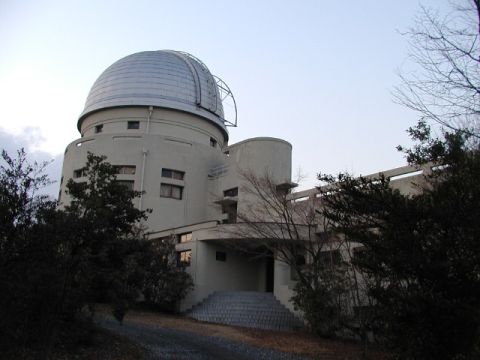
By the 1960s, the skies above Kwasan Observatory had become increasingly bright, leading to the establishment of the Hida Observatory under the Faculty of Science in 1968. Meanwhile, the Fukuchiyama Observatory, equipped with a 40 cm Schmidt telescope primarily used for observing galaxies and interstellar matter, was opened as a facility of the Department of Astrophysics in 1972. In 1977, it was relocated to the Ouda Observatory in Nara Prefecture, where it remained operational until 1987. Subsequently, a 60 cm Ritchey-Chrétien telescope took over its role and continued to make significant contributions. Today, this telescope is preserved at the Observatory Museum in Kagawa Prefecture.
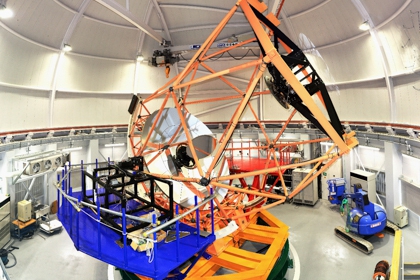
Adjacent to the Okayama Astrophysical Observatory of the National Astronomical Observatory of Japan (NAOJ), a 3.8-meter optical-infrared telescope, the Seimei Telescope, was developed and constructed. It has been operational as a facility of the affiliated observatory since February 2019. Faculty members and graduate students of the Department of Astrophysics are actively involved in observational research as well as the development of the telescope and its instruments.
Now, the Department of Astoronomy forms several research groups based on different themes, conducting a wide range of studies from both theoretical and observational perspectives.

